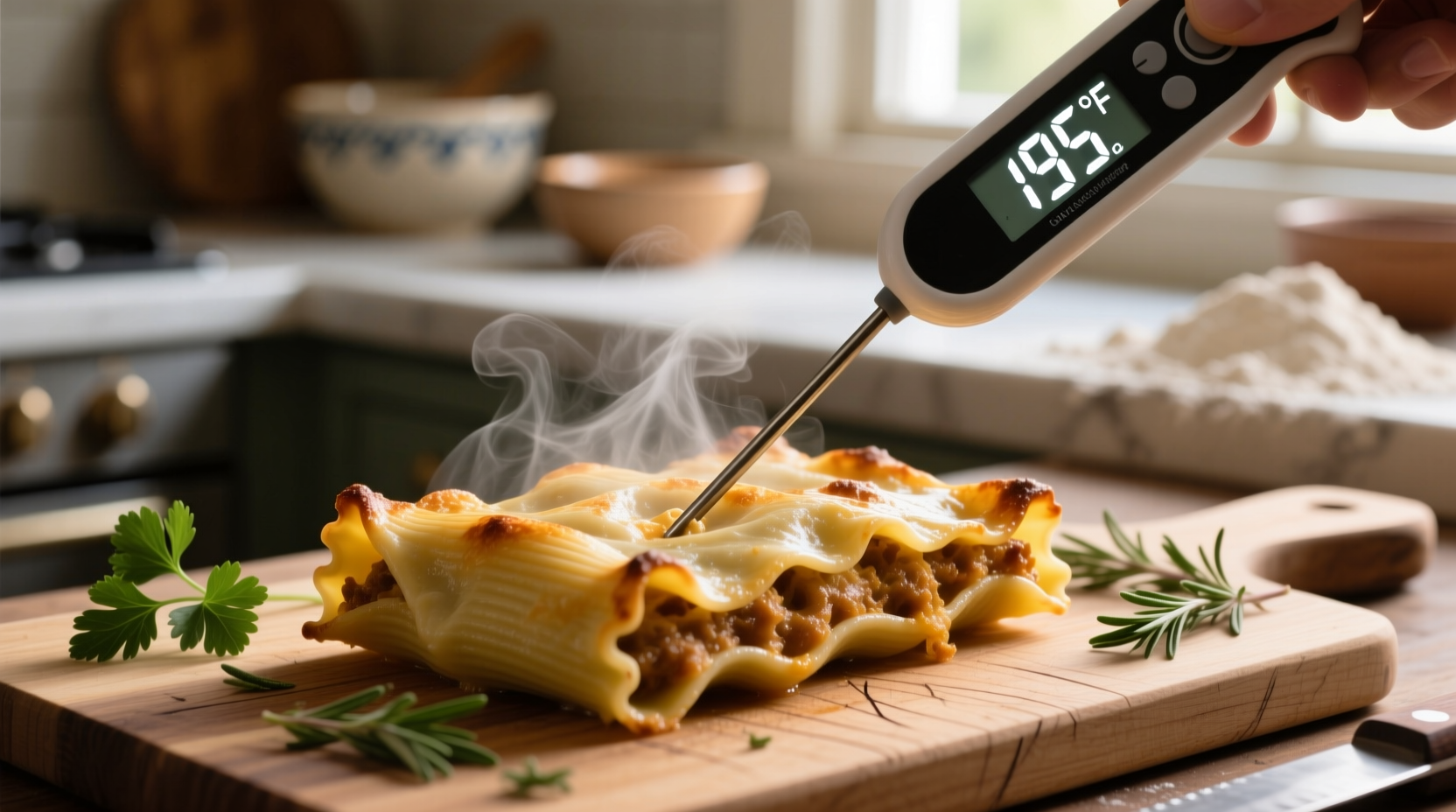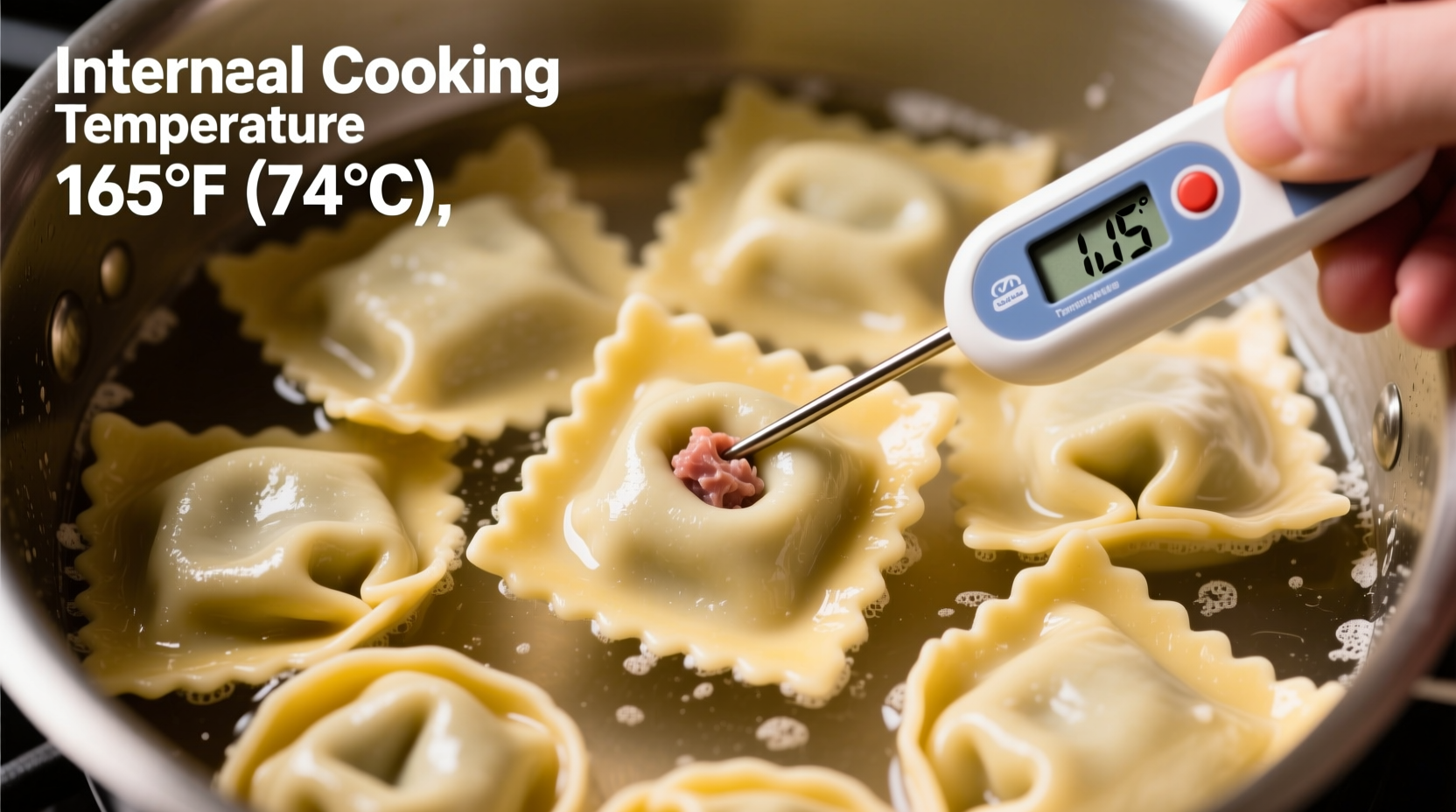Why Stuffed Pasta Requires Higher Cooking Temperatures
Unlike regular pasta which only needs to be cooked until al dente, stuffed varieties present unique food safety challenges. The USDA Food Safety and Inspection Service clearly states that any dish containing potentially hazardous ingredients must reach 165°F internally to be considered safe for consumption.
When you're cooking stuffed pasta, you're not just dealing with flour and eggs—you're working with fillings that often contain:
- Cheese (especially soft cheeses like ricotta)
- Raw meat or poultry
- Egg-based fillings
- Seafood components
These ingredients create what food safety experts call a "temperature danger zone" between 40°F and 140°F where bacteria multiply rapidly. The 165°F threshold ensures complete destruction of pathogens.
Proper Temperature Verification Techniques
Simply guessing when stuffed pasta is done isn't safe. Here's how to accurately verify internal temperature:
- Use an instant-read digital thermometer – these provide the most accurate readings in seconds
- Test multiple pieces – check at least three different stuffed pasta items from various parts of your cooking vessel
- Insert correctly – place the probe tip into the center of the filling, not just the pasta dough
- Wait for stabilization – keep the thermometer in place until the reading stops changing
| Pasta Type | Minimum Safe Temperature | Verification Method |
|---|---|---|
| Stuffed pasta (ravioli, tortellini) | 165°F (73.9°C) | Thermometer in filling center |
| Regular pasta | Visual/taste test | No thermometer needed |
| Stuffed pasta casseroles | 165°F (73.9°C) | Multiple points throughout dish |
Common Cooking Methods and Temperature Management
Different cooking approaches require specific temperature considerations:
Boiling Stuffed Pasta
While boiling is the most common method for fresh stuffed pasta, timing alone isn't sufficient for safety. The USDA explains that water temperature (212°F at sea level) doesn't guarantee the internal temperature of the filling reaches 165°F. Many factors affect this:
- Size and thickness of the pasta
- Type of filling (cheese heats faster than meat)
- Starting temperature (refrigerated vs. frozen)
Always verify with a thermometer even if you follow package instructions.
Baked Stuffed Pasta Dishes
For dishes like baked ravioli or stuffed shells, temperature verification becomes even more critical. The FDA Food Code specifies that when combining pre-cooked components, the final dish must still reach 165°F throughout. Check multiple points in the dish, especially the center where heat penetration is slowest.

Food Safety Timeline: From Raw to Safe Consumption
Understanding the progression from raw ingredients to safely cooked stuffed pasta helps prevent foodborne illness:
- 40°F-140°F (Temperature Danger Zone) – Bacteria double every 20 minutes in this range
- 145°F – Salmonella begins to die but isn't fully eliminated
- 155°F – E. coli starts to be destroyed
- 160°F – Ground meats become safe (but not sufficient for stuffed pasta fillings)
- 165°F – The critical threshold where all common foodborne pathogens in pasta fillings are destroyed
Special Considerations for Different Fillings
Not all stuffed pasta presents the same risk level. The USDA provides specific guidance based on filling ingredients:
- Cheese-only fillings – While lower risk than meat fillings, soft cheeses like ricotta still require 165°F to eliminate potential Listeria contamination
- Meat or poultry fillings – Must reach 165°F regardless of meat type (beef, chicken, pork)
- Seafood fillings – Fish-based fillings need the same 165°F threshold despite fish normally being safe at 145°F due to the pasta structure slowing heat transfer
- Vegan fillings – While lower risk, temperature verification is still recommended when using ingredients like tofu or nut-based cheeses that can support bacterial growth
Practical Tips for Home Cooks
Implement these food safety practices when preparing stuffed pasta:
- Keep a dedicated instant-read thermometer in your kitchen – calibrate it monthly
- When in doubt, cook longer – slightly overcooked pasta is safer than undercooked
- Never rely solely on floating as an indicator – many stuffed pastas float before reaching safe temperatures
- For frozen stuffed pasta, add 3-5 minutes to cooking time before checking temperature
- Discard any stuffed pasta that hasn't reached 165°F after reasonable cooking time
Food Safety Resources
The USDA Food Safety and Inspection Service maintains comprehensive guidelines for safe cooking temperatures. Their "Is It Done Yet?" publication (available at fsis.usda.gov) provides detailed information on safe minimum cooking temperatures for all food types. Additionally, Foodsafety.gov offers real-time food safety advice from multiple government agencies.











 浙公网安备
33010002000092号
浙公网安备
33010002000092号 浙B2-20120091-4
浙B2-20120091-4